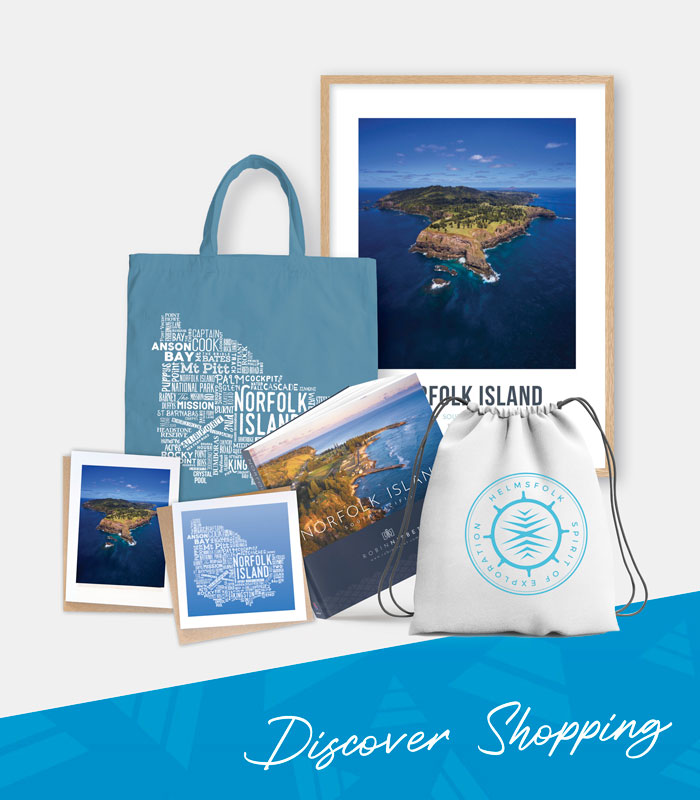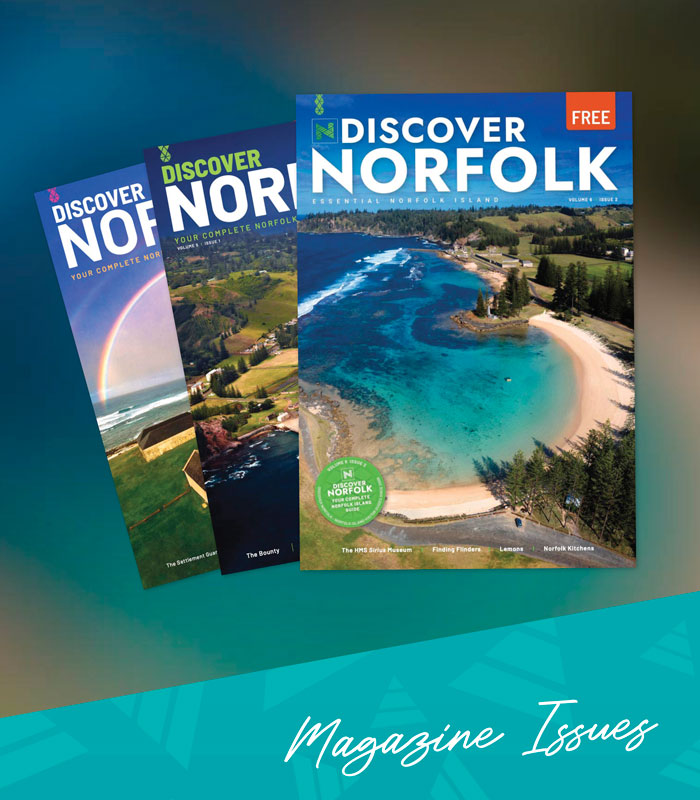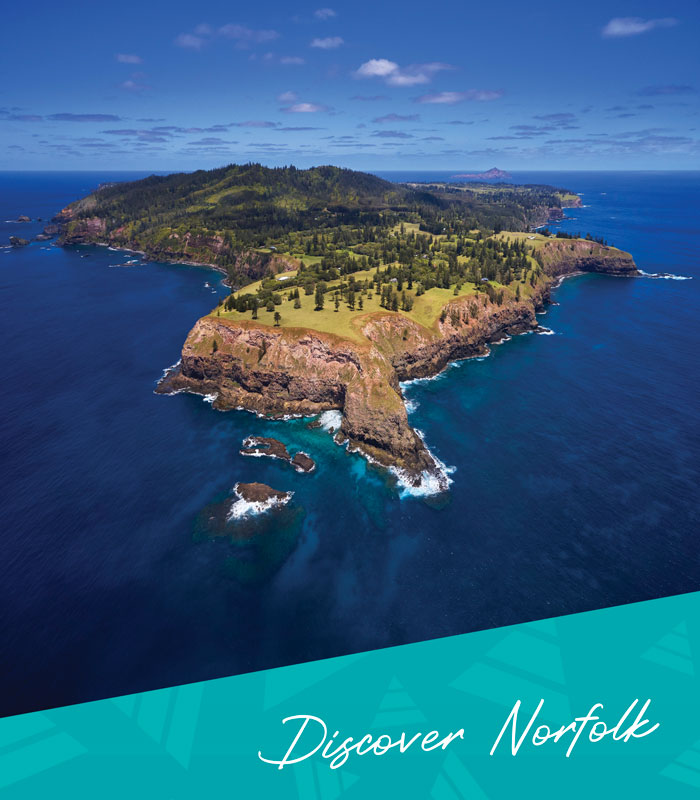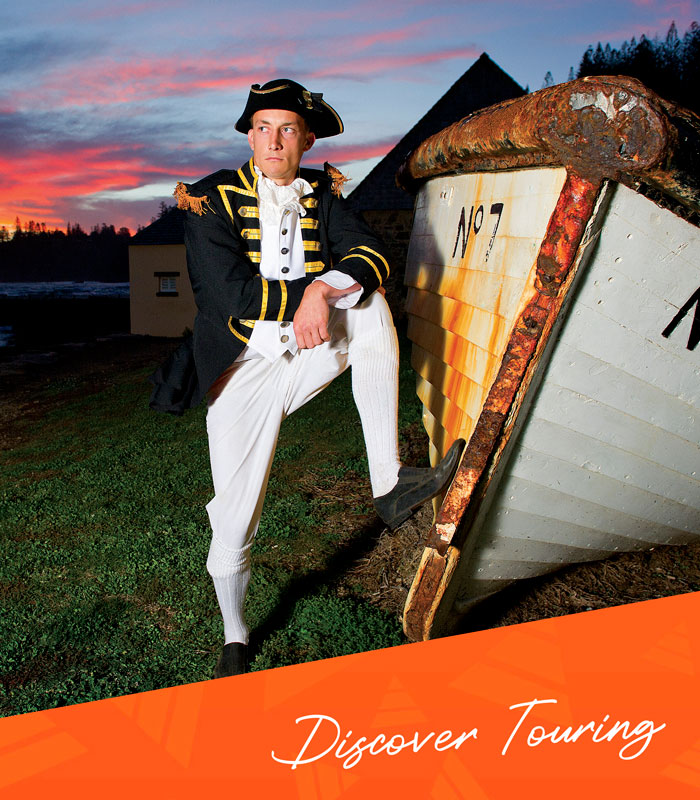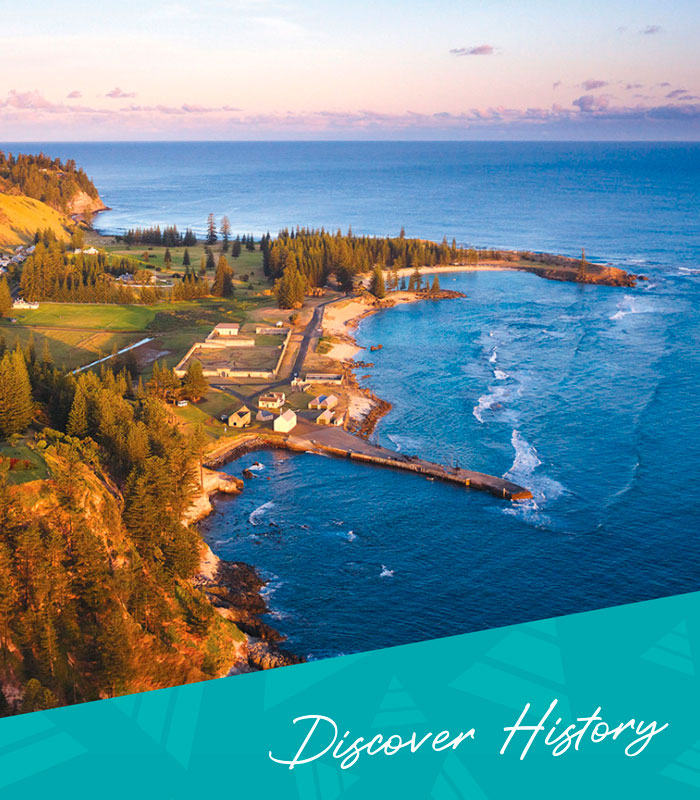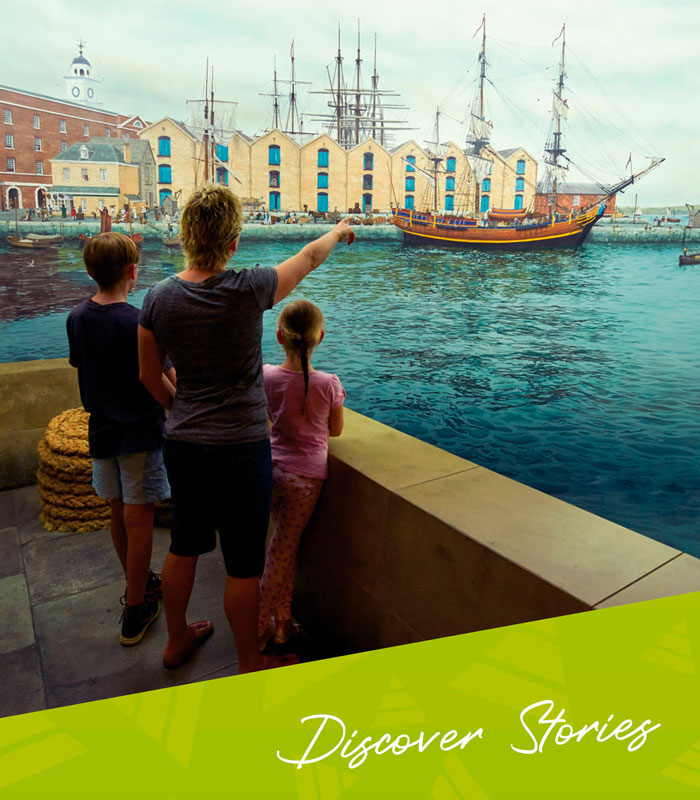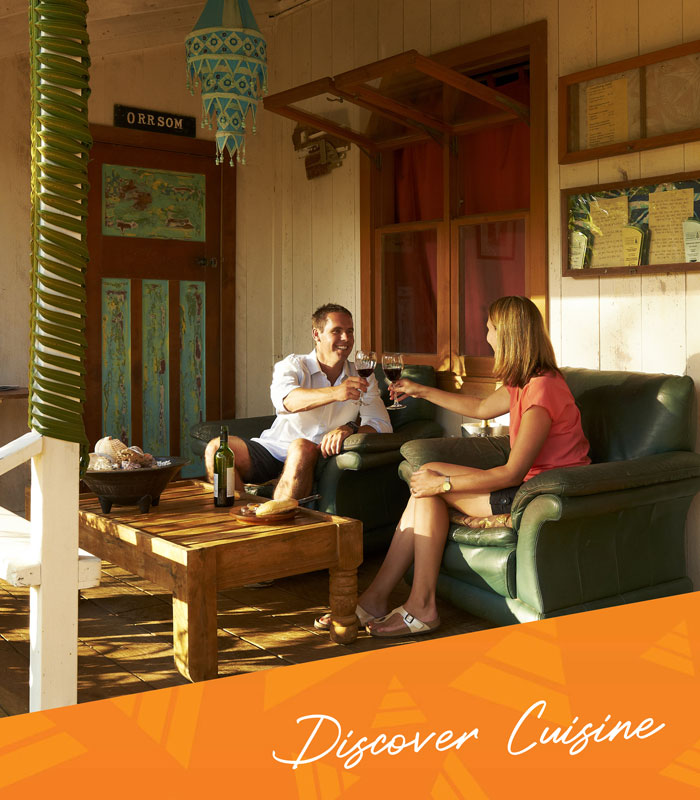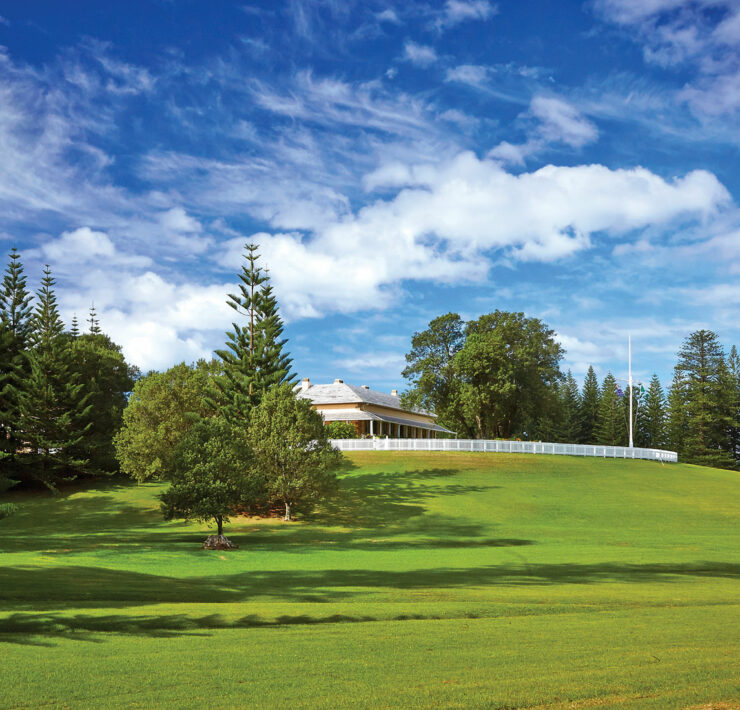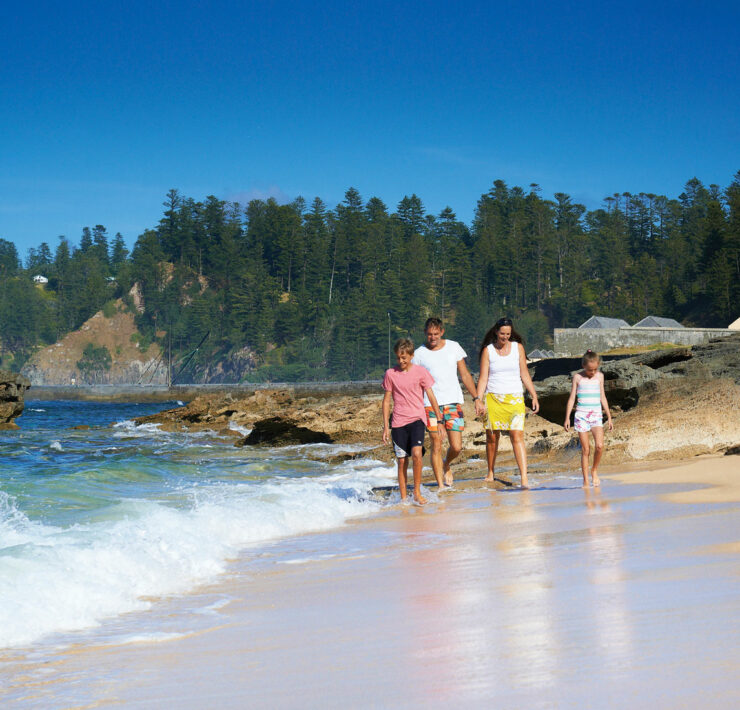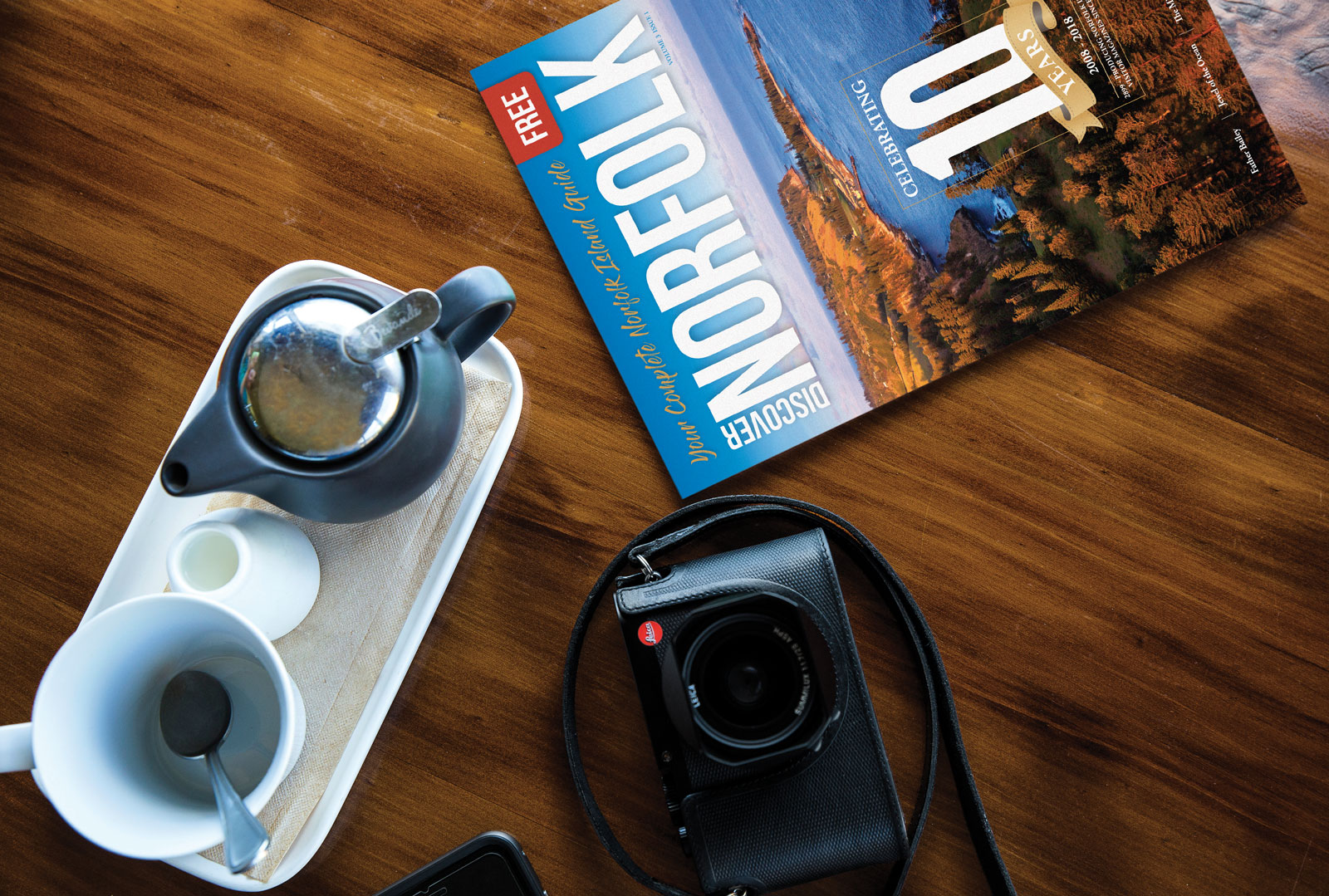Home » All Articles » An Indomitable Island Spirit: Relics from the Resolution
An Indomitable Island Spirit: Relics from the Resolution

In May 1980 at Paray Bay in Port Vila, at a depth of 36 metres, a ships wheel lay virtually as it had since 1949 when the ship it was attached to suddenly sank at its mooring. The wheel was about to be brought to the surface by a diver who may not have understood its significance to another island, 1,200 kms to the south called Norfolk Island.
The wheel came from a ship called the Resolution, built between 1923 and 1925 on Norfolk Island. While the story of the ship ends in failure, the more important human story from the Resolution is one of tenacity and ingenuity in the face of overwhelming obstacles. It is the story of islanders having the resolve to take on and fight against their hardships. Today the wheel and the ship’s bell are proudly displayed in the Pitcairn Norfolk Gallery of the Norfolk Island Museum.
From the arrival of the Pitcairners in 1856 the small and isolated Norfolk Island community had lived and frequently struggled with a subsistence farming existence. From the 1900s there had been many attempts to find export markets for the Island’s produce. Export industries included lemons, oranges, bananas, passionfruit, kentia palm seeds, bean seed, guava jelly, grains, coffee and frozen and smoked fish. These industries had fallen into cycles of ‘boom and bust’. The reason for the ‘busts’ were varied, however immediate causes included trade embargoes, weather conditions, lack of equipment, pests or disease ruining crops and external price variations. The fundamental problem however was the isolation of the Island from external markets and the absence of reliable shipping services.
Prior to the airstrip being built in 1942, shipping was the islands vital link to the outside world. The community was totally dependent upon shipping companies providing services to mainland Australia or New Zealand and in this they were continually disappointed. Irregular visits resulted many times in their fresh produce rotting at the piers. By 1917 the First World War had caused services to rapidly decline. The Norfolk Island Shipping Company attempted to overcome the problem by purchasing the ketch Warrigal. Tragically after only one successful voyage she was lost in a cyclone with all hands on board.
Undaunted, in 1923 the Norfolk Island Farmers and Growers Association resolved to build their own ship and control the means of transporting their produce to market. They named the ship Resolution – it was a good name. It honoured two ships of that name; Captain Cook’s vessel on his second voyage when he discovered Norfolk Island, and the first ship built on Norfolk Island in 1790 (which was subsequently used by Bass and Flinders when they explored Van Diemen’s Land). As a name ‘resolution’ also expressed the determination and indomitable spirit of the Norfolk Islanders as they prepared, yet again, to take control and provide for the export of the Island’s agricultural produce.
It was difficult to source the resources needed to build a boat. Men searched the valleys for timbers with natural bends to make the stern and ribs. A Norfolk Island Pine was selected for the keel, providing a 20 metre log that was dragged to the building site at Emily Bay. There it was pit-sawn, adzed to shape and squared up. Norfolk Pine was also used for the keel and planking, while the framing was of island grown olive and ironwood. She was built as a stout auxiliary schooner of about 60 tons and more than 18 metres in length. In later years New Zealand shipwrights declared her to be “30 percent stronger than normal construction”.
What is clear from the photos of the time is the rejoicing when the Resolution was launched in Emily Bay in December 1925. Flags and streamers adorn her and it appears the whole island population was there to bid her farewell. Her building had been a combined community effort and the community was rejoicing as ‘their’ Resolution set forth on her maiden voyage, captained by George Parkins Christian. An opening had been blasted through the reef to allow her safe access to the open sea and she headed to Auckland loaded with island produce.
The disappointment of the ensuing events would have hit the tiny community hard. A day out to sea the Resolution met with head winds then calms that resulted in a voyage of ten long days with their precious cargo which spoiled. They immediately fitted a diesel engine, but sadly continued to make slow passages. Debts began to accumulate which could not be met and so the most difficult decision was made – to sell the Resolution. In 1927 she was sold to Burns Philp(South Seas).
For the next 20 years the Resolution worked on the Tonga, Fiji and New Hebrides (now Vanuatu) trades. She worked hard in the high seas and tropical storms of the South Pacific. In March 1948 she was disabled by a cyclone and driven to the east coast of New Caledonia where she was rescued. A short time later, she sank at her moorings in the harbour at Port Vila. Her owners apparently did not think she was worth the expense of recovery.
Roger Croton was the diver who retrieved the wheel from the Resolution wreck site in 1980. The ship was still in relatively good condition – much of the hull was still intact and many metal objects were retrieved. Other objects had previously been souvenired and could be seen in local dive shops and bars around Port Vila. In 1985 Mr Croton put the wheel up for auction advertising it in a paper in New Zealand. As reported in “The Norfolk Islander” of 16 September 1995, Mr David Buffett saw the ad and alerted people on the island. It was subsequently jointly purchased for $3,400 by the Norfolk Island Government, the Norfolk Island Historical Society and the Society of Pitcairn Descendants.
The ship’s bell was presented to the Museum in 1989 by Mrs Stephani Campell on behalf of her husband Callam Campbell. He had taken it from the wreck in 1970 and it then spent 19 years as a marvellous “conversation piece” in the lounge room of their home in Hastings, New Zealand. Its return to Norfolk was primarily the result of the efforts of local Geoff Bennett, who had tracked down the Campbells in New Zealand. In his correspondence at the time Mr Bennett explained the reason for wanting to have the bell returned to Norfolk Island as “The Resolution has particular sentiments to a great number of families here, and should the bell ever find itself back on Norfolk Island, I believe that some of the hurt over the loss of the ship on its maiden voyage, will have abated”.
The story of the Resolution stands as one that tells us much about the spirit and resolve of a small and isolated community struggling to take control of their livelihoods. Despite the set backs and failures, they continued to search for the next ‘boom’ with a strong sense of resolve. This little Island still struggles with making its industries prosper and still requires that indomitable spirit as much as ever today.
____
Image Credit: Robin Nisbet
www.robinnisbet.com
____
Article content disclaimer: Article first published in YourWorld, Volume 01 Issue 01, 2010. Please note that details of specific travel, accommodation and touring options may be outdated. References to people, places and businesses, including operating days and times may be have changed. References to Government structure and Government businesses/entities may no longer be applicable. Please check directly with businesses and/or Government websites directly rather than relying on any information contained in this article before you make travel arrangements.


